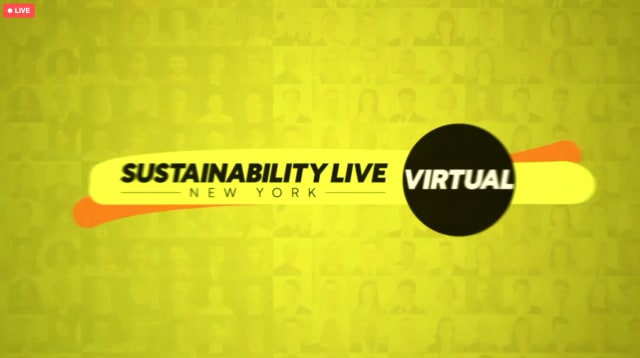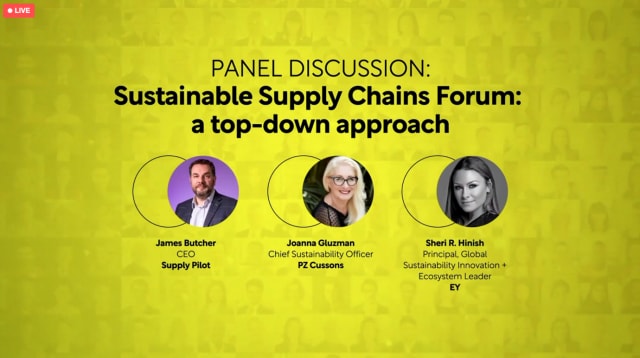Sustainability LIVE New York: going green, net zero and ESGs in PLM.
Environmental, social and corporate governance (ESG) is shifting from mandatory reporting to advanced cross-functional business data management. New guidelines and regulations are continuously being defined and launched in markets, driving complex requirements from local and global environmental mandates toward the Net Zero 2050 agenda.

Sustainability reporting evolved from being a marketing tool to an all-encompassing legal and finance framework, towards inside-out auditing transparency. There is a proliferation of ESG frameworks and important decisions are expected when it comes to the incentives and support required for organizations to learn their way through sustainability. Furthermore, scope 3 emissions continue to be challenging in several industries. This requires an ecosystem approach across value chains, including supply chain engagement in the sustainability journey.
Organizations are not only driving innovation; they are also becoming responsible for the disposal and end-of-life of their products—with increasing accountability across the entire product lifecycle. Difficult and challenging decisions are required to redesign business and operating models to drive new data-driven sustainability priorities. Transparency is required at all levels, driving change management, by educating top-floor to downstream suppliers and cross-functional partners.
During one of the last sessions at Sustainability LIVE New York, Kyra Whitten, senior vice president, Sustainability and President at Flex Foundation, highlighted that “Product lifecycle management (PLM) is becoming more and more important to enable sustainability goals, […] from how products are manufactured, to how materials are managed until the product end-of-life.”
In this post, I elaborate on an interesting panel discussion from the conference entitled “Sustainable Supply Chains Forum: a top-down approach.”
10 Lessons from the Sustainable Supply Chain Panel
The session took a deep-dive into “sustainability [as] a full company endeavor,” debating the fact that “without direction and buy-in from senior leadership, often sustainability efforts are dead in the water. This can be particularly true within supply chains, where lowest cost is often the main consideration when it comes to which suppliers earn those valuable contracts.”

Broadly speaking, the panel agreed that sustainability goals are defined top-down and company-wide. Overall, key points highlighted in the session can be summarized in the following 10 recommendations:
- Sustainability is a top-down strategic mandate, which concerns every business function (not only buried under marketing or the R&D function), with finance playing an increasingly important role in driving business intelligence and driving change.
- Beyond mandatory reporting, effective cross-functional sustainability requires a mindset change. This needs to be embedded in the company-wide culture and DNA: new behaviors, values, beliefs and asset managements.
- Board members are accountable for both business performance and sustainability goals; the two are interconnected in a closed-loop manner.
- Company executives must be educated to fully appreciate the importance of sustainability and its business ramifications. This includes ESG committees and cross-functional governance, but also reporting automation and data-driven sustainability-empowered decision-making at all levels.
- Effective sustainability is about balancing short-term financial goals and long-term sustainability transformation goals; not one or the other, but both perspectives at once and always, following incremental steps.
- Businesses must invest in technologies which help inform better decision-making in parallel to investing in the right people to drive execution, continuous improvements and enabling the relevant cultural transformation.
- Sustainability implies operational transparency across the wider enterprise and supply chain. Beyond financial metrics and regulatory reporting, it relates to core business performance, customer retention and loyalty, brand image, talent attraction, compliance, supply chain auditing, investor relationships and more.
- Sustainability is to be embedded across functional budgets and resource allocation to support end-to-end transformation, not only to enable top-down sustainability initiatives.
- Transparency implies sustainability results that are visible at the board level, and with shareholders and investors. This includes climate emergency command compliance accuracy, implementation agility, data-driven due diligence and promoting trust, accountability and transparency in selecting and managing supply chain relationships.
- Enabling technologies and enterprise platforms are required to drive sustainability forward, from closed-loop analytics to end-to-end PLM solutions, informing better decision-making and compliance reporting.
In addition, James Butcher, CEO at Supply Pilot, compared the sustainability mandate with health and safety requirements—stating that “it is everybody’s job,” both internally and externally. Subsequently, he concludes that the circular economy “is not a sustainability issue, but a [holistic] business issue.”
The panel also debated the approach to get started on the sustainability journey and the importance to do what is necessary now, focusing on incremental gains and accounting for ongoing changes as it is a moving picture. Joanna Gluzman, chief sustainability officer at PZ Cussons, highlighted the continuous need to prioritize. Butcher expanded on the need to put ideas into actions, aligning on-the-go resource efficiency, waste reduction, packaging sustainability and other economies of scale across circular supply chains: “Get started, don’t over-think it!”
Furthermore, Sheri Hinish, principal, Global Sustainability Innovation and Ecosystem leader at EY, commented that “creating value to society goes beyond operational efficiency.” The panelists concurred about the need for adaptability, flexibility, learning and an agile mindset to adjust with sustainability requirements and delivery frameworks. Supply chains are a key element of innovation value chains, hence they have a key role in delivering the end-to-end sustainability mandate.



